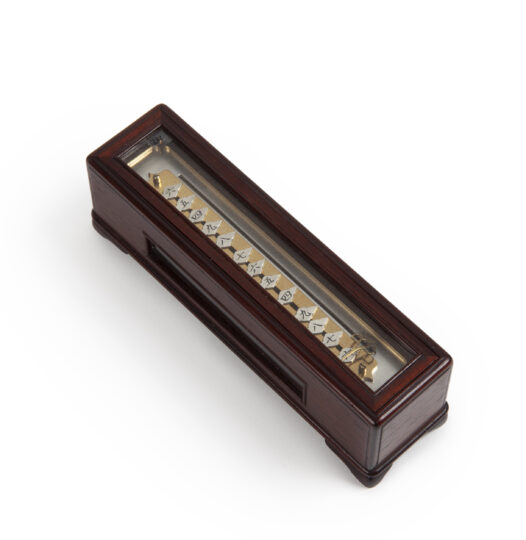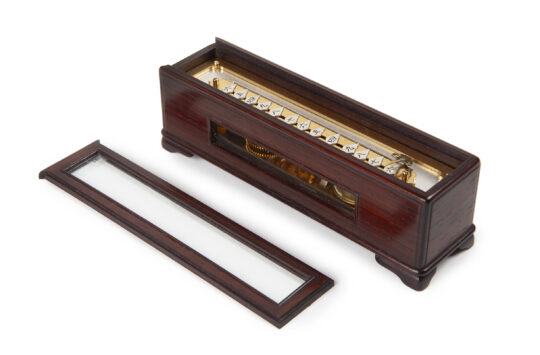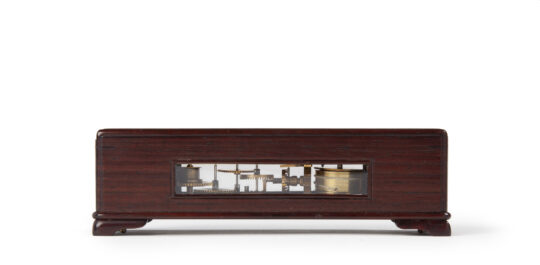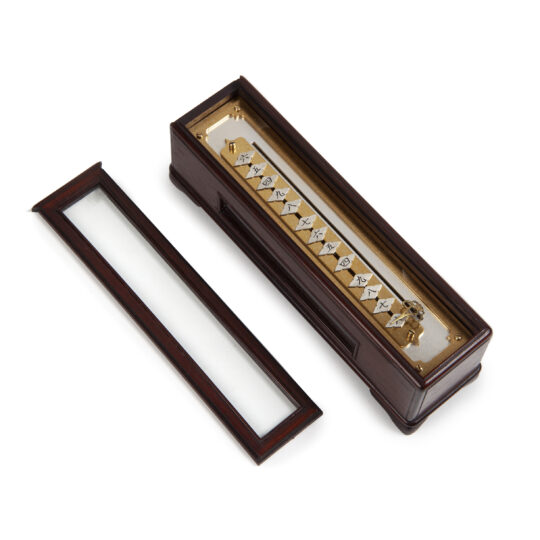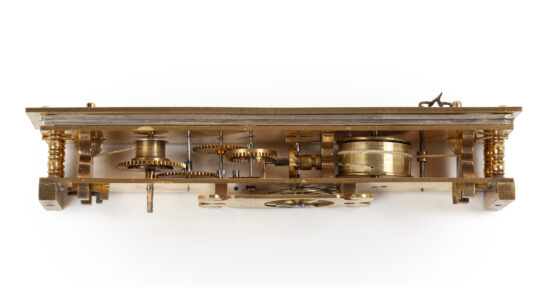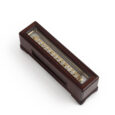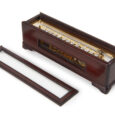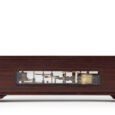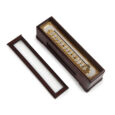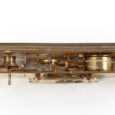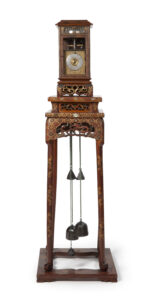MINIATURE PILLAR CLOCK “SHAKU-DOKEI” Ca. 1820 Japan
M&R265
MINIATURE PILLAR CLOCK “SHAKU-DOKEI”
Circa 1820
Japan
Movement
The brass movement has a going train only, which has a verge escapement with a hairspring balance. The winding arbor is located at the bottom and the small balance is visible through an aperture.
Dial
The silver dial with brass strip has 13 sliding silvered ‘tokis’ for the hour indication. The tokis are engraved and lacquered. The Japanese characters on the tokis represent the following numbers from top to bottom: 6, 5, 4, 9, 8, 7, 6, 5, 4, 9, 8, 7, 6. The decoratively pierced brass hand slides on the side along the tokis from top to bottom.
Case
The small shitan-wooden case has windows on both sides of the movement, just like the front, through which the movement is visible. In order to move the tokis, the window set in a wooden frame must be moved upwards.
Duration: 12 hours
Length: 13.5 cm.
Width: 3.5 cm.
Literature
– W. Brandes, Alte Japanische Uhren.
– N.H.N. Mody, Japanese clocks.
– TIJDschrift nrs 0203 and 0204
Japanese timekeeping
Japanese timekeeping differs greatly from Western timekeeping. Instead of taking an hour as a fixed value, in Japan the length of an hour, called toki, differs according to the length of the day and night. Day and night are both divided into 6 tokis, which are counted from sunrise to sunset and from sunset to sunrise. In summer the days are longer than the nights and therefore a toki lasts longer during the day than at night. In winter this works the other way around. For this reason, there are Japanese clocks with sliding plates, so that the length of a toki can be changed. There are also clocks where the chapter ring is fixed, but where the time keeping of the clock can be changed by moving the weights of the foliot, so that the clock runs slower or faster. This occurs with older clocks. The numbers of the clock run from 9 to 4. The only number that is ‘fixed’ is 9 o’clock, our noon time is 12 o’clock. Japanese clocks indicate how many hours remain in the future (after the 5 comes the 4), European clocks indicate how many hours have already passed (after the 5 comes the 6). In Japan the number 9 was sacred. Each toki, 12 in total, also had its own sign of the zodiac, which were also depicted on a chapter ring around the regular chapter ring.

